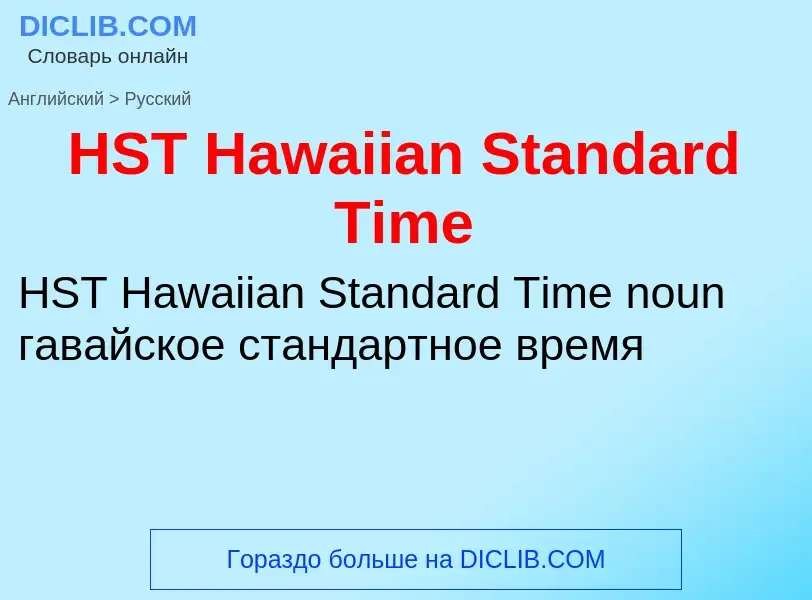Tradução e análise de palavras por inteligência artificial ChatGPT
Nesta página você pode obter uma análise detalhada de uma palavra ou frase, produzida usando a melhor tecnologia de inteligência artificial até o momento:
- como a palavra é usada
- frequência de uso
- é usado com mais frequência na fala oral ou escrita
- opções de tradução de palavras
- exemplos de uso (várias frases com tradução)
- etimologia
HST Hawaiian Standard Time - tradução para Inglês
1) норма времени
2) нормативное время
Wikipédia
The Hawaii–Aleutian Time Zone observes Hawaii–Aleutian Standard Time (HST) by subtracting ten hours from Coordinated Universal Time (UTC−10:00). The clock time in this zone is based on the mean solar time of the 150th meridian west of the Greenwich Observatory.
The zone takes its name from the two areas it includes: Hawaii and the portion of Alaska's Aleutian Islands west of 169° 30′ W longitude.
During daylight saving time (DST), the Alaskan portion observes Hawaii–Aleutian Daylight Time (HDT, UTC−09:00), while Hawaii stays on standard time. Hawaii has not observed daylight saving time since September 1945.
From 1900 until 1947, UTC−10:30 was used as standard time in Hawaii.
French Polynesia uses UTC−10:00 for its major cities. The Cook Islands also use the same time. These areas do not use DST. "Hawaii–Aleutian Time Zone" is a U.S. term and for that reason the Polynesian areas are not considered to be a part of the Hawaii–Aleutian Time Zone.
The largest city and metropolitan area in the Hawaii–Aleutian Time Zone are Honolulu and its metropolitan area, respectively.


![Telegraphic equipment used to transmit standard time from the [[Allegheny Observatory]] Telegraphic equipment used to transmit standard time from the [[Allegheny Observatory]]](https://commons.wikimedia.org/wiki/Special:FilePath/Allegheny Observatory (8098380656).jpg?width=200)
